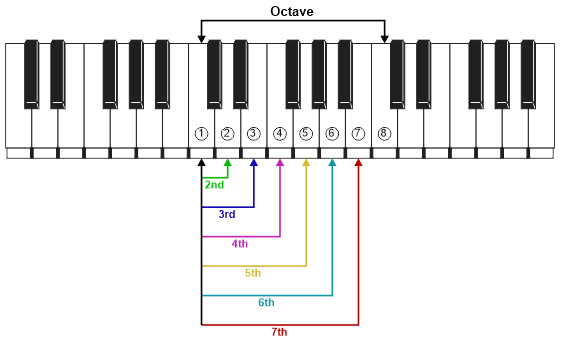Being a long-time music teacher, I have found out that my students tend to do better learning to play “by ear “in any key when they learn chords and then learn to use those chords in chord progressions!
Why? Once the student learns a chord and its inversions, they need to immediately start learning to use that chord in a progression or they will just be learning a bunch of chords and not learning how to USE those chords to play a song.
Start with just the basic progression that every song has—the I, IV, V.
The I to IV
- Start with the ROOT position of the I, then move UP to the closest or the most logical move to the IV.
- Be aware of what notes move up or down and half or whole steps.
- Be aware of HOW THIS MOVEMENT sounds so you can identify it later when listening to another song.
- Usually the IV sound “lifts” or moves higher.
- If the melody line notes move 1, 2, 3, 4 it is a clue that you are will probably be moving to the IV.
- If you are starting with the ROOT position of the I, you will probably move to the 2nd inversion of the IV.
- NEVER move from the ROOT position of the I to the ROOT position of the IV. That is CHUNKY and sounds NASTY!
- Make your chord progressions move smoothly and logically. Don’t make big GAPPY moves!
The I to V
- Start with the ROOT position of the I, now move down to the closest or the most logical move to the V.
- Be aware of what notes move up or down and half or whole steps.
- Be aware of WHAT HOW THIS MOVEMENT sounds so you can identify it later when listening to another song.
- Usually the I to V has a “dropping” or “lowering” sound.
- The melody line notes may move, 1, 3, 4, 5.
- You will be able to “imagine the sound” of the left hand moving down 8, 7, 6, 5. At first you may need to make the left hand movement, but it can sound “dorky” so you don’t want to get into the habit of doing that movement whenever you move I to V.
- NEVER move from the ROOT position of the I to the ROOT position of the V. Think CHUNKY and NASTY!
- Make your chord progressions move smoothly and logically. Don’t make big GAPPY moves!
© 2018 Pamela Rentzel – www.pentecostalmusicians.com/PMblog/
Join us on Facebook at “Play This – Not That!”


